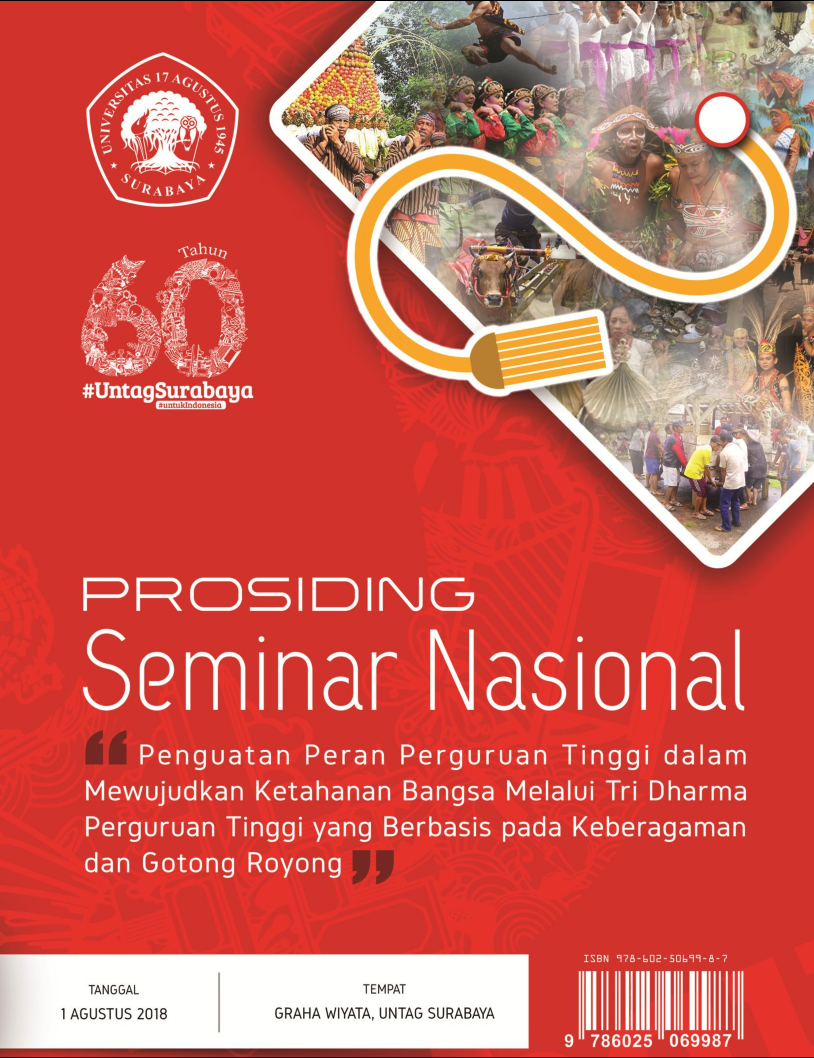PENGARUH SALINITAS AIR LAUT TERHADAP NILAI POTENSIAL PROTEKSI ANODA DENGAN METODE ICCP
Abstract
Reinforced concrete is a material consist of concrete and reinforce steel which is applied as a building and bridge structure. Based on its usefulness, reinforced concrete lies in a highly corrosive medium that is in seawater.Corrosion is reduction of the quality or destruction of a metal reacts with its environment. The process of corrosion in reinforced concrete in the seawater environment can be caused by pH, temperature, and salinity. Salinity of sea water ranges from 32 - 37 0/00. This research was conducted to determine the effect of salinity of seawater to potential value of anode protection on reinforced concrete by ICCP method. The study was divided into three environmental conditions with 32 0/00, 34 0/00, and 36 0/00NaCl, stainless steel304 as anode, and used a reference electrode Cu / CuSO4 with protection potential standard of -350 mV(ASTM C 876-91)for measuring the potential value of its protection. From the measurement results it is known that concrete in the environment of 36 0/00NaCl has a relatively larger current requirement to be able to protect compared to reinforced concrete in the environment of 32 0/00NaCl and 34 0/00NaCl. Thus the potential value of protection by anode in the environment of 36 0/00NaCl is higher than 32 0/00NaCl and 34 0/00NaCl.Corrosion rateof 32 0/00NaCl are 5.2 mpy, corrosion rateof 34 0/00NaCl are 6.8 mpy, and corrosion rateof 36 0/00NaCl are 17.9 mpy. Based on weight loss test and mpy comparison table with equivalent metric-rate corrosion (NACE International, 2002) the corrosion rate at the three salinity conditions included good level with range between 5-20 mpy. Keywords: Corrosion Rate, Reinforced Concrete, ICCP, Salinity, Stainless Steel304.Downloads
References
Burgoon, Michael. (1987). Human
Communication: A Revision of
Approach Speech Communication.
New York: Holt.
Burhan, Bungin. (2010). Metodologi Penelitian
Kuantitatif. Jakarta: Kencana
prenada Media Group.
Deddy, Mulyana. (2005). Ilmu Komunikasi:
Suatu Pengantar. Bandung: PT
Remaja Rosdakarya.
Effendy, Onong Uchjana. (2003). Ilmu Teori
dan Filsafat Komunikas. Bandung:
PT. Citra Aditya Bakti.
Khasanah. (2010). Gaya Hidup Komunitas Punk
di Surabaya (Studi Profil
Komunitas Punk di Jalan Munggur,
Kelurahan Demangan,
Gondokusuman, Yogyakarta).
Surabaya: Universitas
Pembangunan Nasional (UPN
“Veteran†Surabaya).
Olivia, M. Kaparang. (2013). Analisa Gaya
Hidup Remaja Dalam Mengimitasi
Budaya Pop Korea Melalui Televisi
(Studi pada siswa SMA Negeri 9).
Manado: Universitas Sam
Ratulangi (UNSRAT).
Rakhmat, Jalaludin. (2007). Psikologi
Komunikasi. Bandung: PT Remaja
Rosdakarya.
Soekanto, Soerjono. 2003. Sosiologi Suatu
Pengantar. Jakarta: PT Raja
Grafindo Persada.
Sugiyono. (2011). Metode penelitian kuantitatif
dan R&D. Bandung: Alfabeta.
Widjaja, H.A.W. (2010). Komunkasi:
Komunikasi dan Hubungan
Masyarakat. Jakarta: Bumi Aksara.
Wiryanto. (2005). Pengantar Ilmu




